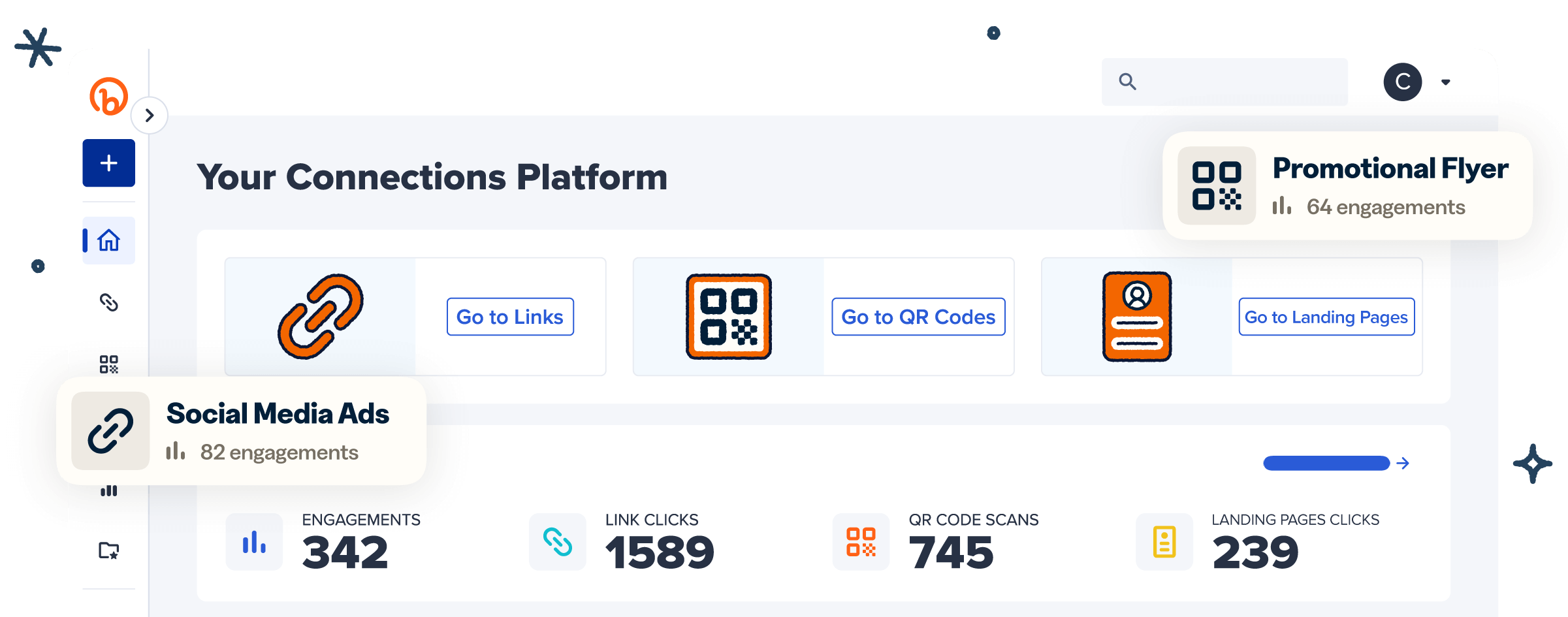Social media is no longer just a playground for personal connections—it’s also a critical space for professional interactions. But the line between successful online engagement and a digital faux pas is often drawn by something quite simple: etiquette.
This isn’t about adhering to a rigid set of outdated rules—it’s about understanding the norms that guide online behavior. Whether you’re connecting with friends or working in social media marketing, these nine universal social media rules will help you navigate the digital landscape with ease.
1. Be respectful
Let’s start with the golden rule of any interaction, whether online or offline: respect. In the rapid-fire world of social media, where opinions clash and keyboards can sizzle, maintaining respect might seem challenging. But it’s worth the effort.
Being disrespectful on social media is like shouting in a crowded room—it’s not only rude, but often counterproductive. It can lead to misunderstandings, heated arguments, and damaged relationships.
Whether you’re a brand trying to reach out to potential customers or an individual connecting with friends, a disrespectful tone can tarnish your image and undermine your goals.
On the flip side, being respectful opens doors. It builds trust, fosters positive engagement, and encourages meaningful connections. When you approach social media with courtesy and consideration, you’re laying the groundwork for fruitful interactions.
Just as you would hold the door for someone in person, leaving space for differing opinions and being gracious in your online conversations can make all the difference.
2. Mind the frequency of your posts
We all have that friend or influencer who floods our feed with posts, turning a delightful stream of content into a never-ending deluge.
Posting too much on social media is a bit like talking non-stop in a conversation. It drowns out others and can lead to annoyance or even the dreaded “unfollow.” Finding a balance in your posting frequency ensures that your audience stays engaged—without feeling overwhelmed.
Best practices for posting frequency vary depending on the platform and your audience’s preferences. Some might appreciate daily updates, while others might prefer a more curated selection a few times a week.
Tools like Bitly’s Link Management can help you share your content smartly and effectively, letting you measure and connect with your audience in the most meaningful way. Think of it as knowing when to chime in with just the right anecdote at a dinner party—not too often, not too scarce, but always on point.
3. Avoid oversharing personal information
Social media offers an inviting space to share our lives, but there’s a fine line between sharing and oversharing. Like that relative who insists on telling everyone about their entire medical history at family gatherings, deeply personal information usually doesn’t belong on social platforms.
Oversharing on your social media accounts can lead to uncomfortable situations for your followers, and it might even expose you to risks like identity theft or targeted scams.
The key is to strike a balance between openness and privacy. Share what enhances connection and understanding, but leave out the details that might be too personal or sensitive. Consider your audience and context, and remember, some stories are best saved for close friends or a personal journal—not the unforgiving landscape of social media.
4. Shorten your links before sharing them
Long links on social media are like those winding, endless stories that seem to go on forever. They take up too much space and can quickly derail an otherwise engaging post.
Lengthy URLs not only make your posts look cluttered but can also lead to mistrust. If a link is too cumbersome or looks suspicious, social media users may hesitate to click on it, leading to missed opportunities for engagement or sales.
Shortening your links, on the other hand, offers a cleaner and more appealing visual presentation. It allows you to keep your message concise and ensures that the focus remains on your content.
Short links are also easier to track, providing valuable insights into user behavior and interaction. Whether you’re promoting a product or sharing a fascinating article, a short link makes the connection more seamless and inviting.
The best way to get started with link shortening is with Bitly. Using Bitly’s link shortener and management tools, you can transform your links into compact, effective, and trustworthy bridges to your content.
Why settle for a jumbled mess when you can have elegance? Give Bitly’s Link Management a try and let your links shine with simplicity and style!
5. Focus on constructive and positive interactions
In the vast universe of social networks, it’s easy to stumble into negativity or get tangled in toxic debates. But choosing the path of constructive and positive interactions can set you apart and elevate your online experience.
Engaging positively encourages open dialogue, fosters community, and often leads to more meaningful connections. It reflects well on your personal or brand image, creating an environment where others feel welcome to join the conversation without fear of hostility.
Being constructive doesn’t mean avoiding all disagreement—rather, it’s about how you approach differing opinions. A respectful, thoughtful response can turn a potential conflict into an opportunity for growth and learning.
Whether you’re interacting with customers or friends, focusing on the positive aspects can enhance your reputation and make your digital space a more inviting place to be. It’s a win-win approach that nourishes relationships, allowing the true essence of connection to shine through.
6. Refrain from engaging with instigators
We’ve all seen them lurking in the comment sections with snide remarks and inflammatory statements—the infamous trolls. Engaging with instigators on social media is a lot like playing a game you can’t win. It’s counterproductive and only fuels the fire of negativity.
Responding to a troll’s provocations rarely leads to a productive conversation and can spiral into a draining and disruptive experience. By choosing to ignore or block these instigators, you maintain the integrity and positivity of your online space, ensuring that your energy is spent on connections that truly matter.
Think of it as sidestepping a puddle on a rainy day—it keeps your journey clean and focused.
7. Respect each platform’s norms
Social media channels are like different countries, each with its own culture, language, and etiquette. What flies in one might not be well-received in another.
Recognizing and adapting to the unique norms of each platform ensures you’re communicating effectively and respectfully. Let’s take a quick tour of some popular social media landscapes and their specific customs.
On Facebook, it’s all about community and connections. Sharing personal stories and photos, as well as engaging in friendly discussions are the norm. Think of your brand’s Facebook page as a virtual backyard barbecue where friends and family gather. Asking for likes or shares is generally acceptable, but maintaining a friendly, conversational tone is key.
LinkedIn is the boardroom of social media. It’s a professional networking site where formal language, industry insights, and career achievements are the standard.
So use LinkedIn to connect with colleagues, share your professional milestones, and engage in industry-specific discussions. Here, a tailored suit is more appropriate than casual wear.
X (formerly Twitter)
X, formerly known as Twitter, is like a bustling city square where rapid-fire conversations take place. The rules of thumb here include concise thoughts, real-time updates, and engaging with trending topics.
Using hashtags and mentioning others is common, but remember, brevity and relevance are your allies on this platform.
Instagram is the art gallery of social media. High-quality images, compelling visuals, and creative storytelling are expected. Whether you’re a brand or an individual, focusing on aesthetics and visual appeal helps you stand out. And don’t forget to utilize hashtags and geotags to reach a broader audience.
Threads
Threads offers an intimate, text-based conversational space distinct from platforms like Instagram. This app prioritizes close connections, emphasizing text exchanges with friends. Posts disappear after 24 hours, fostering a pressure-free sharing environment.
Though it’s still evolving, Threads holds promise as a preferred platform for personal and close-knit social media encounters. Authenticity is encouraged, so Threads is your canvas to express thoughts, feelings, and experiences genuinely.
8. Tag and use hashtags wisely
Tagging and using hashtags are like the spices of social media platforms—they can add flavor and help your content reach your target audience, but too much can overwhelm the dish.
When tagging, think of relevance and context. Tagging people or brands directly related to your content encourages engagement and broadens reach, but over-tagging can look spammy and insincere.
For hashtags, it’s all about being specific yet broad enough to capture interest. Utilizing popular, relevant hashtags can boost visibility and enhance your social media strategy, but using too many or overly generic ones can dilute your message.
The art is in finding that sweet spot where your tags and hashtags serve as bridges to the right audience—without turning into noisy distractions.
9. Be selective in your posts and prioritize meaningful content
In a world where social media feeds are flooded with content, being selective and prioritizing meaningful posts is akin to being the wise sage in a bustling market. Quality trumps quantity, and a well-thought-out, relevant post can resonate more deeply with your audience than a barrage of random, disconnected content.
Think of your posts as chapters in a book. Each one should contribute to the overall narrative, whether it’s a marketing strategy or a personal journey. Posting anything and everything can lead to a disjointed feed and a surplus of notifications, making it harder for followers to connect with you.
Choosing content that aligns with your purpose and values allows for a more coherent and engaging social media presence, turning casual scrollers into devoted readers.
Shorten your links seamlessly with Bitly
Navigating social media with grace is all about understanding the rules, respecting your audience, and delivering meaningful content. Whether it’s choosing the right tone for LinkedIn or finding the perfect hashtag for Instagram, each detail matters.
And when it comes to links, why let them sprawl when Bitly can make them sleek? Start engaging more effectively and authentically with your audience. Let the Bitly Connections Platform help you build those bridges with ease.
Ready to take your links to the next level? Get started with Bitly today and embark on a journey toward cleaner, more impactful connections.




